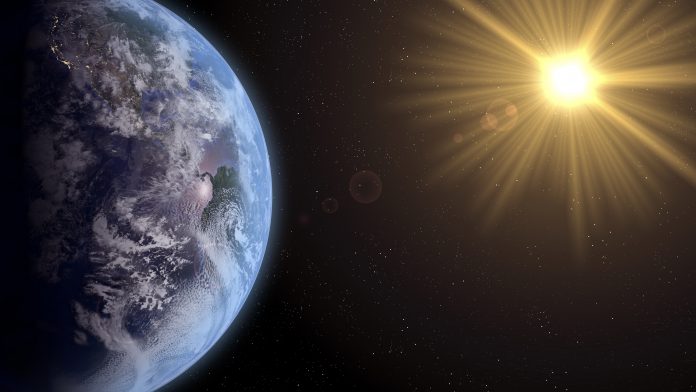The hot outer later of our local star has an unusual chemical composition compared to the inner layers – now, scientists think they have an answer for the mystery of the Sun
While scientists have been calculating the age of the universe (14 billion, give or take a few million years) and examining the way that water forms on different planets, some have turned their research to a more local entity – the mystery of why the Sun has such different chemical compositions at each layer.
In a new study, researchers combined observations from a telescope in New Mexico, the United States, with satellites located near Earth to identify a link between magnetic waves in the chromosphere and areas of abundant ionised particles in the hot outer atmosphere.
What explanations are there for the disparity?
One explanation is that, in the middle layer (the chromosphere), magnetic waves exert a force that separates the Sun’s plasma into different components, so that only the ion particles are transported into the corona, while leaving neutral particles behind (thus leading to a build-up of elements such as iron, silicon and magnesium in the outer atmosphere).
This opens the door to future research using data from the Solar Orbiter, a European Space Agency-mission acquiring close-up images of the Sun. The mission, which launched in February 2020, includes instruments proposed, designed and built at University College London.
‘Long-standing open questions in astrophysics’
Lead author Dr Deborah Baker (UCL Space & Climate Physics) said: “The different chemical compositions of the Sun’s inner and outer layers were first noted more than 50 years ago. This discovery generated what is one of the long-standing open questions in astrophysics.
“The difference in composition is surprising, given that the layers are physically linked, and that matter in the corona originates in the innermost layer, the photosphere.
“Now, thanks to a unique combination of ground-based and space-based observations of the solar atmosphere, carried out nearly simultaneously, it has been possible to definitively detect magnetic waves in the chromosphere and link these to an abundance of elements in the corona that are not found in the inner regions of the Sun.
“Identifying the processes that shape the corona is crucial as we attempt to better understand the solar wind, a stream of charged particles flowing outward from the Sun, which can disrupt and damage satellites and infrastructure on Earth.
“Our new findings will help us to analyse the solar wind and trace it back to where it is coming from in the Sun’s atmosphere.”
‘We can improve understanding of the Universe’
Dr Marco Stangalini (Italian Space Agency and the National Institute of Astrophysics, Rome), a co-author of both papers, said: “The difference in chemical composition between the inner layer, the photosphere, and the corona is a feature not just of our own Sun, but of stars throughout the Universe.
“Thus, by observing our local laboratory, the Sun, we can improve understanding of the Universe far beyond it.”











